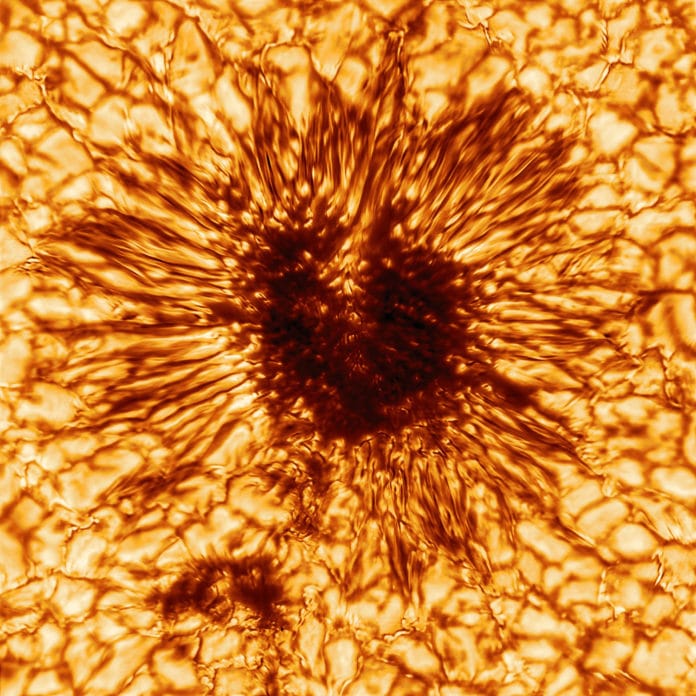The U.S. National Science Foundation’s Daniel K. Inouye Solar Telescope recently released the first-ever image of a sunspot, taken on January 28, 2020. The image indicates how the telescope’s advanced optics and a four-meter primary mirror will give scientists the best view of the Sun from Earth throughout the next solar cycle.
The image uncovers striking details of the sunspot’s structure as observed at the Sun’s surface. The streaky appearance of hot and cool gas spidering out from the darker center is the result of sculpting by a convergence of intense magnetic fields and hot gasses boiling up from underneath.
Dr. Thomas Rimmele, the associate director at NSF‘s National Solar Observatory (NSO), said, “The sunspot image achieves a spatial resolution about 2.5 times higher than ever previously achieved, showing magnetic structures as small as 20 kilometers on the surface of the sun.”
Measuring about 10,000 miles across, this sunspot image is just a tiny part of the Sun. It only appears tiny, but the fact is that our earth can easily fit inside this sunspot.
The concentration of magnetic fields in this dark region smothers heat within the Sun from reaching the surface. In spite of the fact that the dark region of the sunspot is cooler than the encompassing area of the Sun, it is still extremely hot with a temperature of more than 7,500 degrees Fahrenheit.
Dr. Matt Mountain, president of the Association of Universities for Research in Astronomy (AURA), the organization that manages NSO and the Inouye Solar Telescope, said, “With this solar cycle just beginning, we also enter the era of the Inouye Solar Telescope. We can now point the world’s most advanced solar telescope at the Sun to capture and share incredibly detailed images and add to our scientific insights about the Sun’s activity.”
Journal Reference:
- Thomas R. Rimmele et al, The Daniel K. Inouye Solar Telescope – Observatory Overview, Solar Physics (2020). DOI: 10.1007/s11207-020-01736-7
